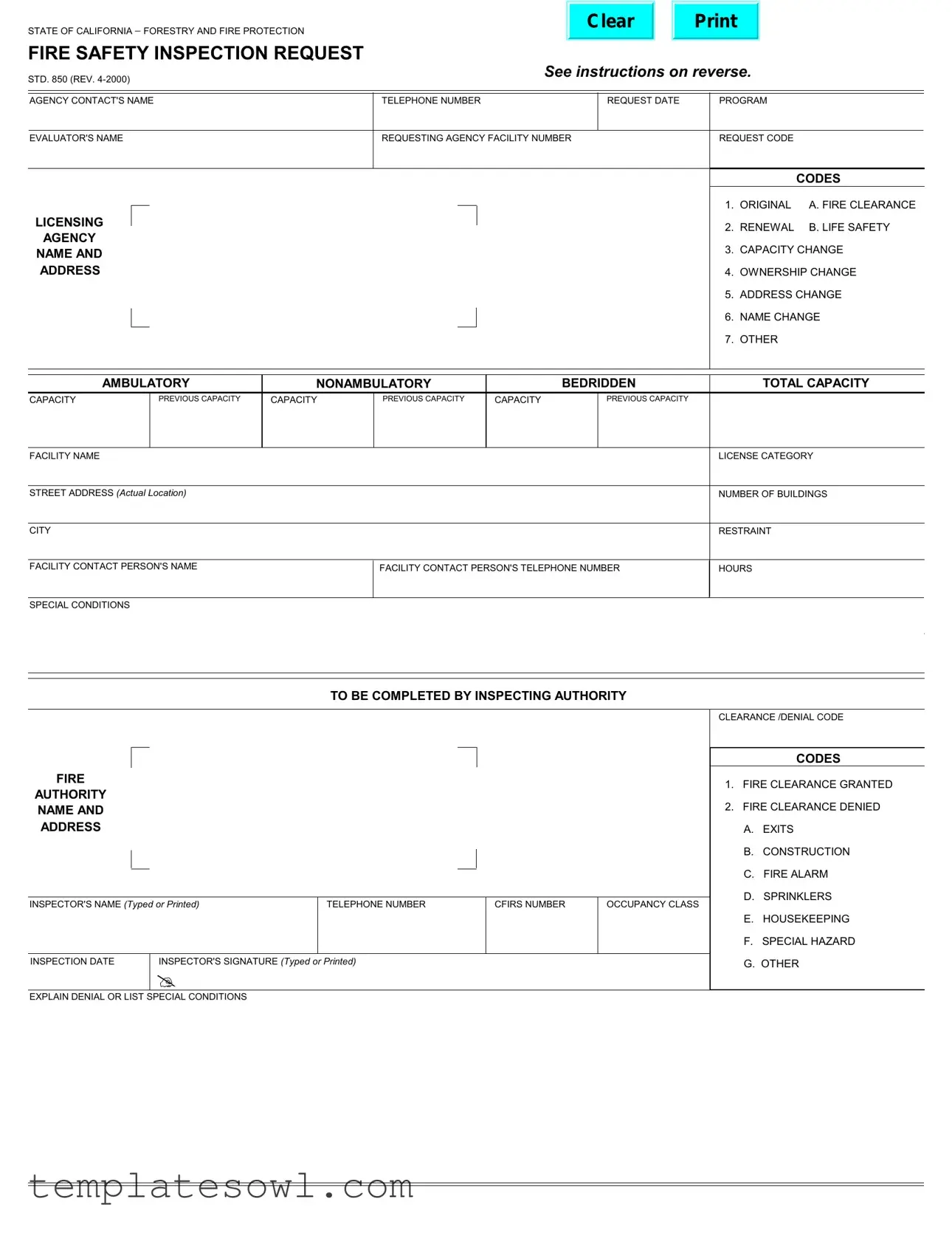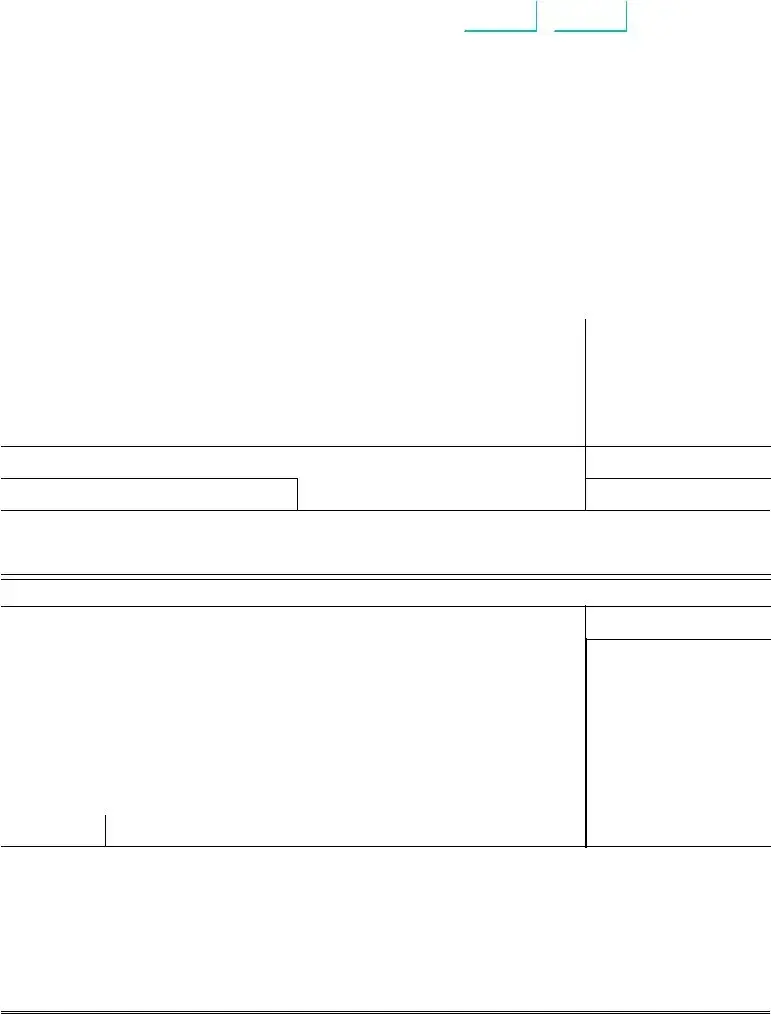What is the purpose of the STD 850 form?
The STD 850 form is a Fire Safety Inspection Request. It is designed for licensed facilities in California to request a fire safety inspection from the local fire authority. This form helps ensure that facilities meet necessary safety standards to protect occupants from fire hazards.
Who should fill out the STD 850 form?
The form should be completed by the requesting agency or facility. This includes details such as the agency name, contact person, and the specific type of request being made. It's essential for the responsible individual at the facility to provide accurate information to facilitate the inspection process.
What types of requests can be made using the STD 850 form?
The form allows for various types of requests: original inspection, renewal, capacity changes, ownership changes, address changes, name changes, and other requests. Each request type has specific codes that need to be filled out on the form to indicate the purpose of the inspection.
What information is required on the STD 850 form?
The form requires several key pieces of information, including the facility name and address, total capacity, number of buildings, type of occupancy, and details about any special conditions. This information is crucial for the fire authority to conduct a thorough inspection.
What happens after the STD 850 form is submitted?
Once submitted, the local fire authority will review the request and schedule an inspection. After conducting the inspection, they will fill out the clearance or denial code based on the findings. You will then receive notification of the outcome, including any special conditions if the request is denied.
What should I do if my request is denied?
If your request is denied, the form provides space for the inspector to explain the reasons behind the denial. It's important to review this explanation carefully. Depending on the issues identified, you may need to address the concerns before resubmitting your request for inspection.
How often should I submit an STD 850 form?
The frequency of submitting this form varies based on changes in your facility. An original request is needed for new facilities, while renewals are typically required every few years. Additionally, any substantial alterations to occupancy or operations might necessitate submitting this form again to ensure compliance with fire safety regulations.

